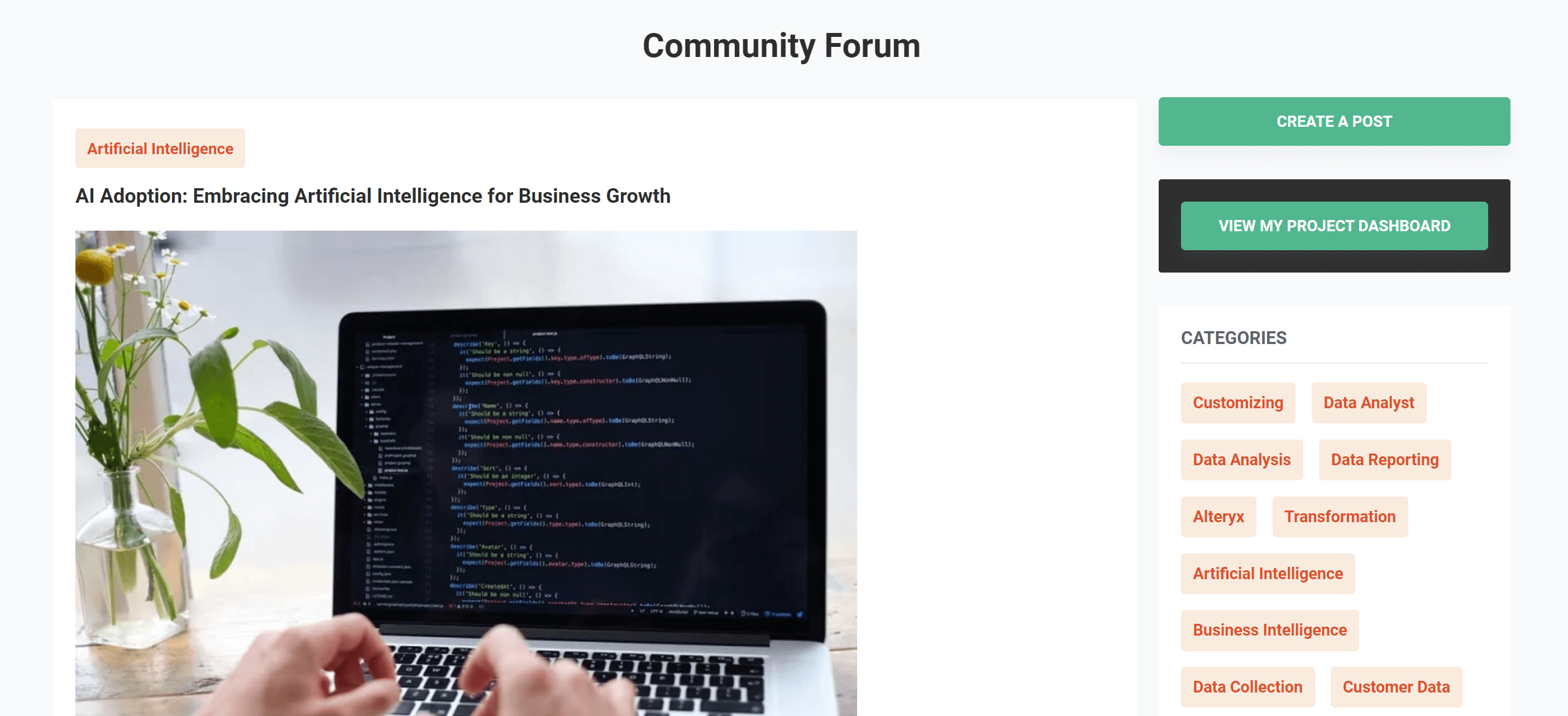Solving Business Problems Using Data Analytics

Data and statistics are being introduced into virtually every aspect of life and business. They have the potential to solve many business problems. Data analytics covers different types of data analysis. Data analytic solutions and techniques can help reveal hidden trends and patterns in large volumes of data. Insights that are revealed are used as the basis of business planning and decision making. Data analytics in and of itself is not the solution – it points in the direction to the solution.
Common organizational issues
Companies are faced with different kinds of problems as a part of the day-to-day management and in trying to anticipate and prepare for future conditions. Data analytics has emerged as one of the most effective ways to reveal core business issues and to highlight solutions. Some of the most common issues faced by companies today and the solutions provided by data analytics are discussed below.
Data management
Digitalization and the increasing use of computer technologies means most companies have an enormous amount of data available. But with these volumes of data, many issues arise.
- Business Issues
- Unused/Unutilized data
- Data silos
- Uncertainties, discrepancies and/or irrelevant data points
- Understanding what the data is saying
- Sharing relevant information in timely fashion
- Slow data management
- Faster data extraction
- Solutions
- Creating effective data management processes by identifying data sources
- Implementing processes for data validation, cleaning, processing, storage, etc.
- Developing data literacy among employees – ability to comprehend, detect and interpret patterns and trends
- Guidance on best technological solutions – software, tools, for reporting and data sharing.
Setting business priorities and performance targets
One of the most important roles of management is in setting performance targets for the organization. There is often a struggle between setting realistic and ambitious objectives. The more information that is available to be used to guide decisions the better.
- Business issues
- Financial accounting and forecasting – effectiveness and accuracy
- Inaccurate accounting / cash flow forecast
- Business planning for short/long term
- Data analytics solutions
- Creating and automating financial forecasting models
- Cleaning up and capturing accurate financial data points
- Developing more accurate business planning models
- Identifying realistic data-driven objectives along with ways to monitor achievement and to trouble-shoot shortfalls
Human resource management
Analyzing key employee metrics such as turnover, attendance, productivity and so on can help HR and management to identify star and problem performers and to create individualized improvement plans.
- Business issues
- Employee turnover
- Process improvement
- Production and operations
- Supply chain and inventory management
- Data analytics solutions
- Identifying and tracking performance of employees
- Modeling key processes to detect and remedy delays/inefficiencies, etc.
- Automating repetitive manual tasks
- Eliminating redundancies
Decision-making
Developing and implementing strategy means going beyond day-to-day management housekeeping. Strategizing requires an understanding of all the questions that can impact a business including business continuity, risk management, risks and opportunities. Data analytics can enrich business strategizing and improve the decision-making process.
- Business Issues
- Investment or divestment decisions
- Improving decision making process
- Business planning/Business strategy development
- Tracking performance against targets
- Data analytics solutions
- Identifying and tracking key performance indicators
- Supporting decision making through predictive forecasting and scenario development
- Revealing undetected/complex patterns and correlations in the data
- Uncovering risks and revealing opportunities
Customer service / Customer relationship management
It goes without saying that the better a company understands their customers, the better it can serve them. Data analytics helps companies to go beyond insights, from customer surveys to reveal the hidden dynamics of customer behavior.
- Business issues
- Increasing customer stickiness/brand loyalty
- Reducing pain points on customer journey
- Increasing sales/consumption
- Decreasing churn
- Data analytics solutions
- Data analytics can identify areas of customer friction and help identify solutions before customer dissatisfaction leads to churn.
- Analytics can assist companies in becoming more proactive in customer relationships – providing quicker resolution or issues and helping to personalize service.
- Customer journey models can identify most valuable segments, suggest different strategies for customer acquisition/retention.
- Customer service automation: IVRs, chatbots, and so on can help reduce customer service costs while maintaining customer satisfaction.
Real-world applications of data analytics
Business, much like life, is often a race to put out fires – rushing to find a quick solution to the latest crises – or pushing to meet a target at the end of a period. Data helps us identify problems before they happen and can point the way to systemic solutions. What data analytics can help us do is to go beyond the immediate dimensions of a business emergency to diagnose, anticipate and remedy business issues. Data analytics gets us to move beyond a reactive business mode to a proactive approach.

Manufacturing
In the manufacturing industry, controlling quality and managing production costs are key drivers. Using data on human and machine performance can help to reduce errors and down-time. Data analytics can optimize production pointing to improvements in human work scheduling, maintenance, quality, and planning.
- Objective: Increasing efficiencies
- Data analytics solutions:
- Optimizing machine operation
- Improving production scheduling
- Information about machine performance can help manage runtime, downtime, work queues, faults, and so on.
Online gaming and content providers
Gaming is a multi-billion dollar a year industry. Using detailed information about customer behavior game developers are able to craft the most compelling experiences for their users – while extracting maximum value from players. As for online content providers, mining customer information is a valuable resource to drive advertising sales.
- Objective: Increasing eyeballs – viewer/player stickiness – pushing personalized content to increase sales
- Data analytics solutions
- Identifying tools to incentivize players to keep logged in – new quests, top-up discounts, etc.
- Using algorithms to push personalized content to readers – encouraging continued clicking and reading.
Consumer retail: Sales & pricing
Sales data analytics is one of the most powerful areas where data can help companies improve both the top and bottom line by improving segmentation and developing more efficient pricing models
- Objective
- Increasing sales: identify strong/weak products
- Streamlining distribution
- Identifying most profitable pricing schemes
- Managing inventory – taking into account factors such as logistics, regions, demographics, seasonality
- Data analytics solutions
- Manufacturers, wholesale, and retail distributors can use data analytics to track stock and inventory, identifying upstream and downstream issues.
- Companies can do deep dives into regional sales patterns – analyzing impact of demographics, seasonality and so on to develop regional sales strategies
- Data analytics can be used to identify the most effective pricing strategies for consumer goods – including determining timing for discounts and flash sales
Financial services industry
The financial services industry was one of the first sectors to adopt data analytics in a big way. Data is used to inform decisions on risk management, portfolio development, and customer experience management.
- Objective
- Developing more accurate and agile revenue models, budgets, and forecasts
- Developing and selling products/services
- Detecting fraud and predicting customer defaults
- Data analytics solutions
- Budgeting & Planning:
- Data analytics can help forecasting and planning because the models can increase the number of factors or drivers included in the modeling as well as identifying the key issues moving forward.
- Models can be partially automated to make updates quicker and more accurate.
- Fraud/defaults data analytics can process huge amounts of information, detecting unusual transactions or patterns – helping to identify and eliminate fraud. Trend analysis can identify risk factors for customer defaults.
- Data analytics can determine the most attractive financial products or services for different customer segments.
- Budgeting & Planning:
Delivery & logistics
Logistics companies were among the earliest adopters of digital technologies. These days they are still at the forefront of digitalization. The industry is a complex one, where even minor changes can impact costs and processing times. Data analytics helps companies to forecast demand more accurately, plot fastest and most cost-effective routes, and manage customer needs more effectively.
- Objectives
- Create more accurate forecasts
- Identify most time and cost-efficient routes
- Identify cost-saving measures
- Data analytics solutions
- Companies like DHL and FedEx are using data analytics to:
- Determine shipping routes
- Examine and remedy common pick up/delivery issues
- Provide more time-sensitive costing/pricing
- Automate repetitive and back-office processes, increasing efficiency and reducing costs
- Companies like DHL and FedEx are using data analytics to:
What can data analytics achieve?

- Detect, reveal and uncover hidden information
The ability to process vast amounts of data can help focus business analysis by eliminating unnecessary details and by highlighting overlooked factors.
- Automation and ML
Data analytics can help automate and streamline decision-making processes for commonly made decisions – such as stock management and supply ordering.
- Deepening learnings
Data analytics can help identify similar problems/situations deepening the insight and experience of decision makers, so they are able to choose quickly and effectively between different courses of action.
- Faster data extraction
The more data analytics are used as the basis of decision making and analysis the more data is made available for future analysis. This creates a feed-back loop where data extraction becomes gradually faster and more well-organized.
- Predictive analysis
Increased reliance on data analytics helps move organizations from looking only at the past to find solutions to real-time business issues but to begin predicting and manipulating future outcomes using better modeling abilities.
To use data analytics effectively, we must focus not on the different data analytics technologies and solutions but on the business issues at hand. “To translate a business problem into an AI and data science solution, you need to understand the problem, the data analysis goals and metrics, and the mapping to one or more business patterns” When approaching a business issue, we need to do the following:
- Define the business problem in clear simple terms understandable by the end user or business user – not just the data analyst.
- Identify the data that is needed to answer the question:
- Is the data available?
- What kind of processing, cleaning, or organizing does the data need to be usable?
- Use data analytics to develop, interpret and analyze the data to provide answers to your business concerns.
If you require support in data analytics, you can find the best talent from around the world on Pangaea X. Click here to learn more.
Get your data results fast and accelerate your business performance with the insights you need today.



